I'm trying to figure out what technologies I would need to process images for characters.
Specifically, in this example, I need to extract the hashtag that is circled. You can see it here:

Any implementations would be of great assistance.
I'm trying to figure out what technologies I would need to process images for characters.
Specifically, in this example, I need to extract the hashtag that is circled. You can see it here:

Any implementations would be of great assistance.
though I think there might be easier ways. OpenCV is an open source library used to build computer vision applications and Tesseract is an open source OCR engine.
Before we start, let me clarify something: that is not a circle, its a rounded rectangle.
I'm sharing the source code of the application that I wrote to demonstrate how the problem can be solved, as well as some tips on what's going on. This answer is not supposed to educate anybody on digital image processing and it is expected the reader to have a minimal understanding on this field.
I will describe very briefly what the larger sections of the code does. Most of the next chunk of code came from squares.cpp, a sample application that is shipped with OpenCV to detect squares in images.
#include <iostream>
#include <vector>
#include <opencv2/highgui/highgui.hpp>
#include <opencv2/imgproc/imgproc.hpp>
// angle: helper function.
// Finds a cosine of angle between vectors from pt0->pt1 and from pt0->pt2.
double angle( cv::Point pt1, cv::Point pt2, cv::Point pt0 )
{
double dx1 = pt1.x - pt0.x;
double dy1 = pt1.y - pt0.y;
double dx2 = pt2.x - pt0.x;
double dy2 = pt2.y - pt0.y;
return (dx1*dx2 + dy1*dy2)/sqrt((dx1*dx1 + dy1*dy1)*(dx2*dx2 + dy2*dy2) + 1e-10);
}
// findSquares: returns sequence of squares detected on the image.
// The sequence is stored in the specified memory storage.
void findSquares(const cv::Mat& image, std::vector<std::vector<cv::Point> >& squares)
{
cv::Mat pyr, timg;
// Down-scale and up-scale the image to filter out small noises
cv::pyrDown(image, pyr, cv::Size(image.cols/2, image.rows/2));
cv::pyrUp(pyr, timg, image.size());
// Apply Canny with a threshold of 50
cv::Canny(timg, timg, 0, 50, 5);
// Dilate canny output to remove potential holes between edge segments
cv::dilate(timg, timg, cv::Mat(), cv::Point(-1,-1));
// find contours and store them all as a list
std::vector<std::vector<cv::Point> > contours;
cv::findContours(timg, contours, CV_RETR_LIST, CV_CHAIN_APPROX_SIMPLE);
for( size_t i = 0; i < contours.size(); i++ ) // Test each contour
{
// Approximate contour with accuracy proportional to the contour perimeter
std::vector<cv::Point> approx;
cv::approxPolyDP(cv::Mat(contours[i]), approx, cv::arcLength(cv::Mat(contours[i]), true)*0.02, true);
// Square contours should have 4 vertices after approximation
// relatively large area (to filter out noisy contours)
// and be convex.
// Note: absolute value of an area is used because
// area may be positive or negative - in accordance with the
// contour orientation
if( approx.size() == 4 &&
fabs(cv::contourArea(cv::Mat(approx))) > 1000 &&
cv::isContourConvex(cv::Mat(approx)) )
{
double maxCosine = 0;
for (int j = 2; j < 5; j++)
{
// Find the maximum cosine of the angle between joint edges
double cosine = fabs(angle(approx[j%4], approx[j-2], approx[j-1]));
maxCosine = MAX(maxCosine, cosine);
}
// If cosines of all angles are small
// (all angles are ~90 degree) then write quandrange
// vertices to resultant sequence
if( maxCosine < 0.3 )
squares.push_back(approx);
}
}
}
// drawSquares: function draws all the squares found in the image
void drawSquares( cv::Mat& image, const std::vector<std::vector<cv::Point> >& squares )
{
for( size_t i = 0; i < squares.size(); i++ )
{
const cv::Point* p = &squares[i][0];
int n = (int)squares[i].size();
cv::polylines(image, &p, &n, 1, true, cv::Scalar(0,255,0), 2, CV_AA);
}
cv::imshow("drawSquares", image);
}
Ok, so our program begins at:
int main(int argc, char* argv[])
{
// Load input image (colored, 3-channel)
cv::Mat input = cv::imread(argv[1]);
if (input.empty())
{
std::cout << "!!! failed imread()" << std::endl;
return -1;
}
// Convert input image to grayscale (1-channel)
cv::Mat grayscale = input.clone();
cv::cvtColor(input, grayscale, cv::COLOR_BGR2GRAY);
//cv::imwrite("gray.png", grayscale);
What grayscale looks like:
// Threshold to binarize the image and get rid of the shoe
cv::Mat binary;
cv::threshold(grayscale, binary, 225, 255, cv::THRESH_BINARY_INV);
cv::imshow("Binary image", binary);
//cv::imwrite("binary.png", binary);
What binary looks like:

// Find the contours in the thresholded image
std::vector<std::vector<cv::Point> > contours;
cv::findContours(binary, contours, cv::RETR_LIST, cv::CHAIN_APPROX_SIMPLE);
// Fill the areas of the contours with BLUE (hoping to erase everything inside a rectangular shape)
cv::Mat blue = input.clone();
for (size_t i = 0; i < contours.size(); i++)
{
std::vector<cv::Point> cnt = contours[i];
double area = cv::contourArea(cv::Mat(cnt));
//std::cout << "* Area: " << area << std::endl;
cv::drawContours(blue, contours, i, cv::Scalar(255, 0, 0),
CV_FILLED, 8, std::vector<cv::Vec4i>(), 0, cv::Point() );
}
cv::imshow("Countours Filled", blue);
//cv::imwrite("contours.png", blue);
What blue looks like:

// Convert the blue colored image to binary (again), and we will have a good rectangular shape to detect
cv::Mat gray;
cv::cvtColor(blue, gray, cv::COLOR_BGR2GRAY);
cv::threshold(gray, binary, 225, 255, cv::THRESH_BINARY_INV);
cv::imshow("binary2", binary);
//cv::imwrite("binary2.png", binary);
What binary looks like at this point:
// Erode & Dilate to isolate segments connected to nearby areas
int erosion_type = cv::MORPH_RECT;
int erosion_size = 5;
cv::Mat element = cv::getStructuringElement(erosion_type,
cv::Size(2 * erosion_size + 1, 2 * erosion_size + 1),
cv::Point(erosion_size, erosion_size));
cv::erode(binary, binary, element);
cv::dilate(binary, binary, element);
cv::imshow("Morphologic Op", binary);
//cv::imwrite("morpho.png", binary);
What binary looks like at this point:
// Ok, let's go ahead and try to detect all rectangular shapes
std::vector<std::vector<cv::Point> > squares;
findSquares(binary, squares);
std::cout << "* Rectangular shapes found: " << squares.size() << std::endl;
// Draw all rectangular shapes found
cv::Mat output = input.clone();
drawSquares(output, squares);
//cv::imwrite("output.png", output);
What output looks like:

Alright! We solved the first part of the problem which was finding the rounded rectangle. You can see in the image above that the rectangular shape was detected and green lines were drawn over the original image for educational purposes.
The second part is much easier. It begins by creating a ROI (Region of Interested) in the original image so we can crop the image to the area inside the rounded rectangle. Once this is done, the cropped image is saved on the disk as a TIFF file, which is then feeded to Tesseract do it's magic:
// Crop the rectangular shape
if (squares.size() == 1)
{
cv::Rect box = cv::boundingRect(cv::Mat(squares[0]));
std::cout << "* The location of the box is x:" << box.x << " y:" << box.y << " " << box.width << "x" << box.height << std::endl;
// Crop the original image to the defined ROI
cv::Mat crop = input(box);
cv::imshow("crop", crop);
//cv::imwrite("cropped.tiff", crop);
}
else
{
std::cout << "* Abort! More than one rectangle was found." << std::endl;
}
// Wait until user presses key
cv::waitKey(0);
return 0;
}
What crop looks like:
![]()
When this application finishes it's job, it creates a file named cropped.tiff on the disk. Go to the command-line and invoke Tesseract to detect the text present on the cropped image:
tesseract cropped.tiff out
This command creates a file named out.txt with the detected text:
Tesseract has an API that you can use to add the OCR feature into your application.
This solution is not robust and you will probably have to do some changes here and there to make it work for other test cases.
There is a few alternatives: Java OCR implementation
They mention the next tools:
And a few others.
This list of links can also be useful: http://www.javawhat.com/showCategory.do?id=2138003
Generally this kind of task requires lots of trial and testing. Probably the best tool depends much more the profile of your input data than anything else.
You can check this article : http://www.codeproject.com/Articles/196168/Contour-Analysis-for-Image-Recognition-in-C
It comes with math theory and implementation on C# (unfortunately, but there not that much to rewrite if you decide to implement it in java ) + opencv. So you will have to use Visual Studio and rebuild against your opencv version if you would like to test it, but it worth it.
OCR works well with scanned document. What you are referring to is text detection in general images, which requires other techniques (sometimes OCR is used as part of the flow)
I'm not aware of any "production ready" implementations.
for general information try google scholar with: "text detection in images"
a specific method that worked well for me is 'stroke width transform' (SWT) it's not hard to implement, and I believe that there also some implementations available online.